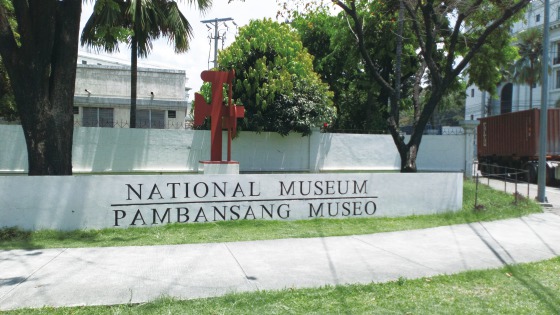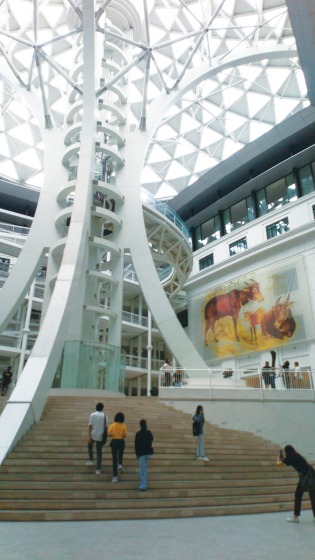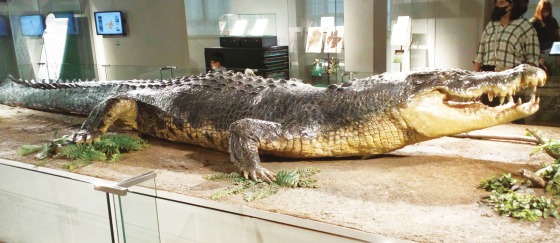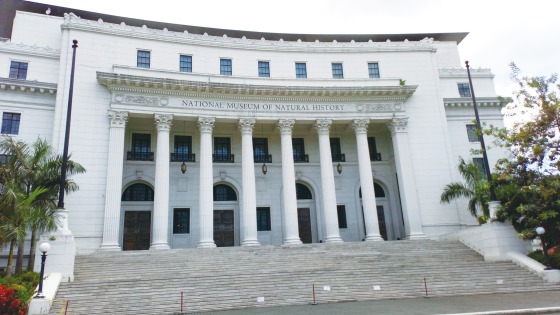まず訪れたい3つの博物館。ナショナルミュージアム
どこのミュージアムに行けばいいか迷ったら、まずはやはり国立博物館、ナショナル・ミュージアムへ。マニラ市のリサール公園とその周辺には芸術、自然史、人類学の3つのナショナルミュージアムがある。公園内に博物館が点在するのはまさに東京・上野公園のような感じ。堂々と荘厳な外観の建築は、ニューヨークやワシントンDCにある博物館のような雰囲気を漂わせ、写真映えも確実。ミュージアムと公園散策をセットで楽しみたい。
※ナショナル・プラネタリウムは閉鎖中 (2022年3月26日現在)

For an In-depth Understanding of the Philippines,
Visit the National Museum of the Philippines
If you’re wondering which museum to go to, first go to the National Museum. There are three national museums in and around Rizal Park in Manila featuring fine arts, natural history, and anthropology. The majestic and photogenic buildings of the museums make you feel as if you were in New York or Washington DC. Let’s enjoy the museum and strolling around the park.
*The National Planetarium is closed (as of March 26, 2022) .
Address : P. Burgos Drive, Rizal Park, Manila
Open : Tuesday to Sunday 9am – 4pm (Cut-off time 3pm)
入場無料 Admission Free
www.nationalmuseum.gov.ph
※記載の情報は、2022年3月下旬から4月上旬にかけての取材時点のものです。お出かけの際は事前に各施設のSNS等で開館時間、入場料、ワクチン接種証明の提示などについて確認をおすすめします。
■国立自然史博物館
National Museum of Natural History
ナショナルミュージアム・オブ・ナチュラルヒストリー
目玉はギネス認定の巨大ワニ。
フィリピンにサイがいた!?
フィリピンのユニークで多様な動物、植物、地質について知ることができる自然史博物館。館内に入ってまず「おお!」と驚かされるのが、5階まで吹き抜けのフロアにそびえるオブジェ「ツリー・オブ・ライフ」。この吹き抜けの壁沿いにゆるやかなスロープ状の通路があり、5階まで歩いて行ける。

吹き抜けのフロアにある巨大オブジェ「ツリー・オブ・ライフ」。 A giant structure Tree of Life in the atrium.
自然科学系の博物館といえば、巨大な恐竜の骨格が展示の目玉だが、この自然史博物館にはない。代わりにクジラやワニの骨格がある。ワニの骨格はロロンと名付けられた人食いワニで、捕らえられたワニでは世界最大としてギネスブックに認定されている。あと驚かされたのは、サイの歯の化石。70万9000年前、フィリピンにはサイがいて、人が狩って食べていたという。
自然史博物館ではフィリピンに生息する哺乳類、爬虫類、両生類、鳥、魚、昆虫にいたるまで紹介されている。動物園では物足りないという人にこの博物館はおすすめ。展示されているのは模型やはく製、化石で動かないけれど・・・・・・。

こちらはワニではなく、マッコウクジラの骨格。全長13.25メートル。1994年マリンドゥケ州の海岸に打ち上げられていたオスのマッコウクジラを地元の男性が解体し、骨格を完全な状態で保存していた。 Skelton of a male 13.25-meter-long sperm whale, which was found on the beach of Marinduque province.
Giant Skelton and Taxidermy Welcome You
The museum exhibits the unique and diverse animals, plants, and geology of the Philippines. Entering the building, you will be surprised at a five-story structure and aquarium named “Tree of Life”.

ソルトウォータークロコダイル「ロロン」のはく製。全長6.17メートル、体重1,075キロのオスで、捕獲時の年齢は少なくとも50歳。2011年9月、ミンダナオ地方南アグサン州の湿地で捕獲されるまで、漁師、少女、何頭もの水牛を襲って食べたとされる。ロロンの名付け親であるベテランのクロコダイルハンターは、ロロンの捕獲時に亡くなった。ロロンは捕獲された後、2013年2月に死んだ。 Lolong, a male saltwater crocodile had a total length of 6.17 meters and weight of 1,075 kilograms, aged at least 50 years. Lolong was said to have taken the lives of a fisherman, a girl and several water buffaloes before it was captured in September, 2011. After being captured, it died in February, 2013.
When it comes to museums, in my opinion, a gigantic dinosaur skeleton is a must have attraction. However, the museum does not have it. Instead, there are whale and crocodile skeletons. The crocodile’s skeleton is a man eater crocodile named Lolong, which has been certified by the Guinness Book of Records as the largest captured crocodile.
Another thing that surprised me was the fossil teeth of the rhinoceros. Rhinos were in the Philippines? It is said that there were rhinos in the Philippines 709,000 years ago, and people were hunting and eating them
The Natural History Museum shows mammals, reptiles, amphibians, birds, fish, and insects are and were living in the Philippines. Probably you will probably see many more creatures here than in a zoo, although they are models, stuffed animals, and fossils.

【国立自然史博物館】リサール公園に立つラプラプの像を正面に見て、 右に自然史博物館、左に人類学博物館がある。 Looking at the statue of Lapu-Lapu standing in Rizal Park in front, the Natural History Museum is on the right and the Anthropology Museum is on the left.















